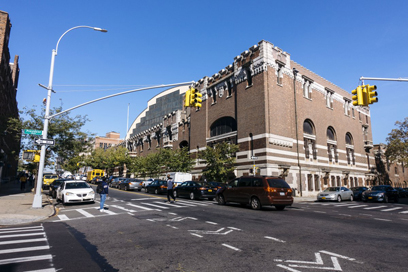Years before inmate Jamel Floyd died after being pepper sprayed inside a Sunset Park federal prison, the 35-year-old said he had suffered “permanent” intestinal damage from swallowing a paperclip in his food at a Long Island jail — and had been barred from filing a grievance report about the incident, court records allege.
“I had concerns about internally bleeding because it felt like it was ripping my insides open,” Floyd wrote in his 2009 lawsuit, which he filed six months after the incident.
Floyd had been jailed at the Nassau County Correctional Center prior to his trial in 2010. Following his conviction, he began serving out his sentence at various prisons — including Brooklyn’s Metropolitan Detention Center, where he was incarcerated from October 2019 until his death on June 3.
While he was at the Long Island detention facility, Floyd reportedly ingested the metal shard while eating a meal in January of 2009, causing bleeding in his mouth and intense abdominal pain, according to the lawsuit.
Staffers took Floyd to the hospital on the day of the injury, and an x-ray showed the paper clip fragment in his digestive tract, according to the complaint.
Two separate x-rays conducted in the following weeks determined the metal was no longer in his body, according to the court documents — but Floyd said he continued to feel pain in his abdomen for months after the incident.
“As a result of the defendants callous indifference, plaintiff has been permanently damage[d]. His stomach cramps up alot and every now and then there is spotted blood when ever he use the bathroom [sic],” wrote Floyd in the complaint.
Floyd also alleged that the jail denied him adequate medical care and that its food services system — which employs inmates to prepare food — doesn’t include enough professional oversight, putting other inmates in danger. He sought $5 million in damages.
After the incident, Floyd said he had attempted to file a grievance report within the five-day window required before inmates can take legal action — but claimed his attempts were “denied,” and that he was held in a “dry cell” that banned outside materials in the week following the incident, preventing him from filing any report, according to the court order.
Still, a judge claimed that Floyd “failed to exhaust his claims pursuant to the available administrative remedy” and dismissed the case, agreeing with the defendants’ argument the incident was a “mistake,” rather than evidence of unconstitutional practices at the jail. An appeal of the case in 2011 was also dismissed.
The case came more than 10 years before corrections officers used mace in an attempt to restrain Floyd, who became “disruptive” and “potentially harmful to himself and others” inside his cell at Sunset Park’s Metropolitan Detention Center on June 3, according to the Federal Bureau of Prisons.
“Responding staff observed inmate Jamel Floyd barricaded inside his cell and breaking the cell door window with a metal object,” the Bureau of Prisons said in a statement on June 3. “Pepper spray was deployed and staff removed him from his cell.”
Floyd became unconscious, and medics transported him to a nearby hospital, where he was pronounced dead, according to the statement.
Floyd’s mother told the Daily News that her son was asthmatic, making pepper spray potentially life-threatening.
“He had underlying medical conditions they were aware of. They knew he had asthma and was diabetic,” Donna Mays told the Daily News last week. “He died because of the mace. You do not mace an asthmatic.”
His death sparked outrage from local politicians and activists, who demonstrated outside the facility on June 4 as part of nationwide protests against law enforcement that have swept the city since May 28.
During that demonstration, Mays blasted the corrections officers for using the chemical agent against her son.
“They murdered him,” said the distraught mother.























